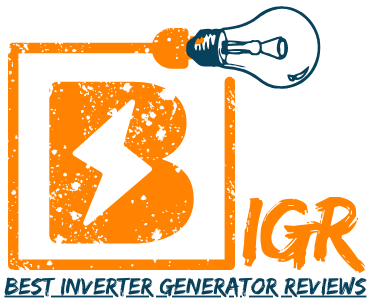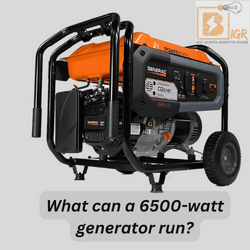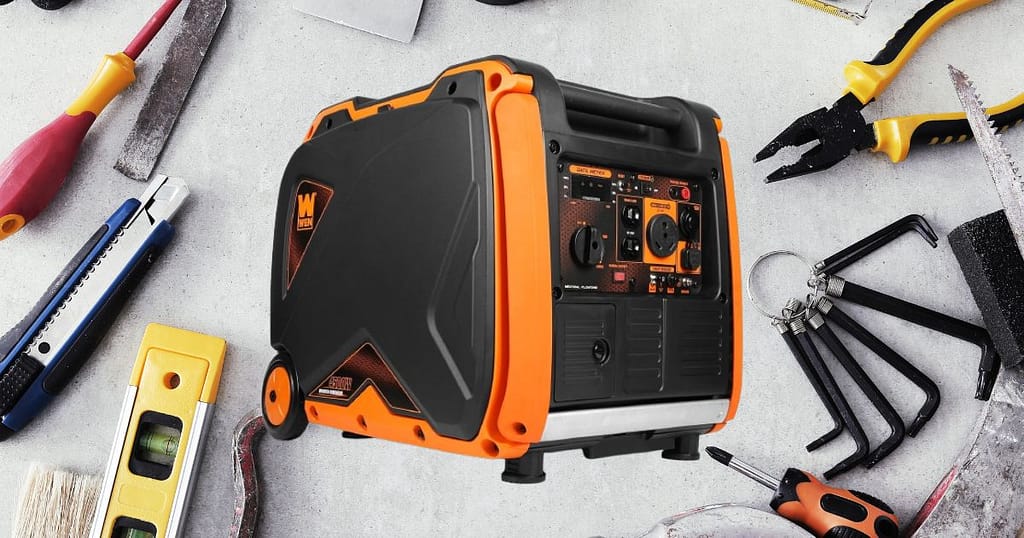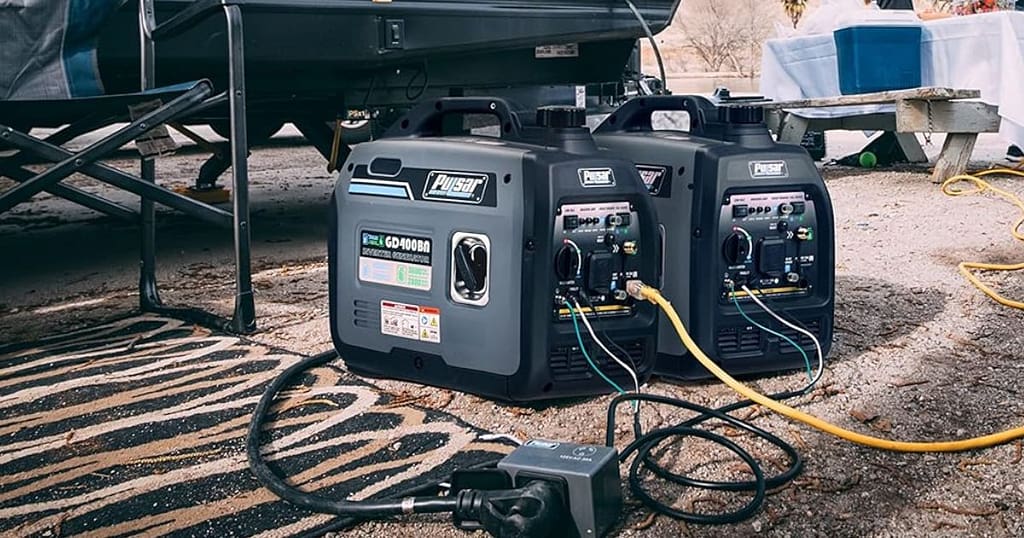If you find yourself in the middle of a power outage, it’s reassuring to know you have a reliable generator on hand to keep your essential appliances running. But have you ever wondered exactly what kind of wattage your generator can supply?
As a generator owner myself, I used to have the same question – what can I actually power with my 6500-watt unit? Will it be enough to keep the fridge cold and a few lights on? Or can it handle more?
In this post, we’ll break down exactly what can a 6500-watt generator run. I’ll share real-world examples of common appliances and their wattage needs. By the end, you’ll have a clear understanding of how to calculate your generator’s power capacity and maximize its abilities in an outage.
Whether you need to power a small home office, RV, or construction worksite, the information covered here will help you determine if a 6500-watt generator is the right size for your needs.
What Can a 6500-watt Generator Run?
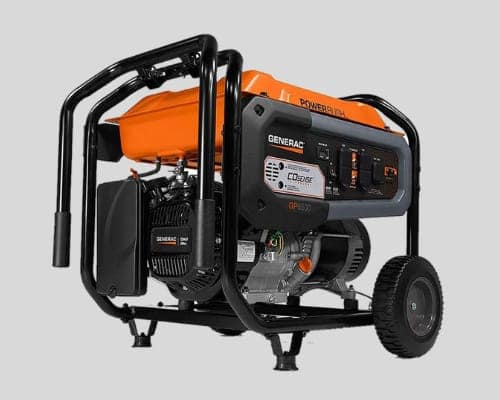
The Logic Behind Starting Watts and Running Watts
When shopping for a generator, you’ll often see two power ratings – starting watts and running watts. At first glance, it can be confusing as to what each means and which one matters more for your needs. Let me break it down simply:
Starting watts refer to the maximum amount of power a generator can produce for a very short period, usually only a few seconds. This surge of power is important because many appliances require a bigger kickstart when they’re first switched on. Things like air conditioners, refrigerators, and power tools often need an initial boost to get their motors humming.
You can think of starting watts like accelerating your car – it takes more gasoline to launch it from a stop than to keep it cruising at a steady speed. The generator needs extra juice to start heavy-duty appliances up and running.
Running watts, on the other hand, indicate the continuous power level a generator can reliably produce over extended time. This is what keeps appliances and electronics operating once they’re up and running. It’s similar to a car’s fuel economy – how far it can travel on a tank at a steady cruising speed.
Generators are rated for both starting and running watts, but they can’t sustain the starting wattage indefinitely. That burst is just for the initial startup surge. The running watt rating shows what power level the generator can maintain, say, to run lights, small tools, phones charging, etc. for hours on end.
So, pay attention to starting watts if you need to power appliances with significant startup demands. Consider running watts for basic power needs that don’t require that initial kick. Bigger generators will have higher ratings for both. I hope this helps explain the difference in a clear, straightforward way! Let me know if any part is still unclear.
What appliances can I run on a 6500-watt generator at home?
Below is an extended chart detailing the estimated running and starting watts of various home appliances. You must read which generator is ideal for you home.
| Appliances | Running Watts | Starting Watts | Notes |
| Refrigerator (Standard) | 600-800 | 1200-2000 | Starting watts are higher during compressor startup. |
| Freezer | 500-800 | 1200-2000 | Similar to refrigerators, with increased startup watts. |
| Air Conditioner (10,000 BTU) | 1200-1800 | 1800-2500 | Larger units may have higher power requirements. |
| Microwave | 1000-1500 | 1500-2000 | Power needs depend on the microwave’s size and wattage. |
| Coffee Maker | 600-1200 | 1200-1500 | Standard coffee makers typically fall within this range. |
| Toaster | 800-1500 | 1200-1800 | Power requirements vary based on the toaster’s features. |
| Dishwasher | 1200-1500 | 1800-2400 | Startup watts are higher during the dishwasher’s cycle. |
| Washing Machine | 500-1000 | 1000-1500 | Power needs vary based on the machine’s size and features. |
| Clothes Dryer (Electric) | 1800-5000 | 4000-6000 | The range reflects different dryer sizes and heating elements. |
| Television | 100-400 | 100-400 | Power requirements depend on the size and type of the TV. |
| Computer | 100-800 | 400-1000 | Power needs vary based on the computer’s specifications. |
| Laptop | 30-100 | 30-100 | Lower power consumption compared to desktop computers. |
| Ceiling Fan | 10-50 | 10-50 | Fans have minimal power requirements. |
| LED Light Bulb | 5-15 | 5-15 | Energy-efficient bulbs have low power needs. |
| Incandescent Light Bulb | 40-100 | N/A | Incandescent bulbs don’t have a significant starting wattage. |
| Vacuum Cleaner | 500-1200 | 1000-1500 | Power needs depend on the vacuum cleaner’s size and features. |
| Hair Dryer | 1200-1800 | 1800-2500 | Startup watts are higher during the hair dryer’s initial phase. |
What RV appliances can I run on 6500 watt generator?
Below is an extended chart detailing the estimated power requirements of various RV appliances, helping you understand what can be powered by a 6500-watt generator.
| Appliances | Watts | Notes |
|---|---|---|
| RV Air Conditioner (13,500 BTU) | 1600-2000 | A 6500-watt generator can typically handle one AC unit. Multiple units may require additional capacity. |
| Refrigerator | 600-800 | Standard RV refrigerators fall within this range. |
| Freezer | 500-800 | Similar to household freezers, RV freezers have comparable power needs. |
| Lights (LED or incandescent) | Varies (minimal) | LED lights have lower power requirements. |
| RV Heater | 1000-2000 | The power requirement depends on the heater type and size. |
| Water Pump | 100-200 | RV water pumps have relatively low power needs. |
| Microwave | 1000-1500 | Compact RV microwaves generally fall within this range. |
| Coffee Maker | 600-1200 | Standard coffee makers suitable for RV use. |
| Toaster | 800-1500 | Compact toasters are generally within this power range. |
| RV TV | 100-400 | Power needs depend on the size and type of the TV. |
| RV DVD Player | 100-200 | Standard power requirements for DVD players. |
| Laptop/Phone Charger | 30-100 | Low-power devices that can be easily accommodated. |
| RV Vent Fan | 40-60 | Roof vent fans have minimal power requirements. |
| Electric Griddle | 1500-1800 | Cooking appliances like griddles may have higher power needs. |
| RV Water Heater (Electric) | 1000-1500 | Electric water heaters in RVs fall within this range. |
| RV Refrigerator Vent Fan | 15-30 | Auxiliary fans to improve refrigerator ventilation. |
| RV Lights (Outdoor/Security) | Varies (minimal) | LED lights are energy-efficient and have minimal power needs. |
| RV Stereo System | 50-200 | Power requirements depend on the audio system’s features. |
What tools can I run on 6500 watt generator at construction or job site?
Below is an extended chart detailing the estimated power requirements of various tools commonly used at construction or job sites. This information will help you understand what tools can be powered by a 6500-watt generator.
Also, read how to choose right generator for construction site.
| Tools | Power Requirement (Watts) | Notes |
| Circular Saw | 1500-2300 | Consider the blade size and material being cut. |
| Miter Saw | 1200-1800 | Power requirements vary based on the saw’s size. |
| Table Saw | 1800-2200 | Larger saws may have higher power requirements. |
| Air Compressor | 1000-2000 | Power needs depend on the compressor size. |
| Electric Drill | 500-1200 | Corded drills typically fall within this range. |
| Welder (smaller models) | 3000-6000 | Check the specific power requirements of your welder. |
| Angle Grinder | 1000-1500 | Power needs depend on the grinder’s size and purpose. |
| Belt Sander | 800-1000 | Standard power requirements for belt sanders. |
| Reciprocating Saw | 800-1200 | Power needs vary based on the saw’s features. |
| Jobsite Lights | Varies (LED preferred) | LED lights are energy-efficient and have minimal power needs. |
| Concrete Mixer | 1000-1500 | Power requirements depend on the mixer’s size. |
| Power Drill Press | 600-1200 | Benchtop drill presses typically fall within this range. |
| Electric Chainsaw | 1200-1800 | Power requirements depend on the chainsaw’s size. |
| Demolition Hammer | 1000-1500 | Power needs vary based on the hammer’s size and purpose. |
| Portable Heater | 1000-1500 | Consider the heater type and size for accurate power needs. |
| Airless Paint Sprayer | 500-1500 | Power requirements depend on the sprayer’s size and features. |
| Shop Vac | 1000-1500 | Vacuum power needs vary based on the model. |
| Concrete Vibrator | 800-1200 | Power requirements depend on the vibrator’s size. |
How Can You Determine Your Power Need?
The first step is to make a list of the essential appliances and tools you’ll need during a power outage. This could include things like a refrigerator to keep food cold, a fan or AC unit to stay cool, lighting, and devices to stay connected like a laptop or phone charger.
Next, check each item for its rated watts. This will be listed on a label or manual and represents how much power it uses to run normally. If this isn’t available, you can calculate watts using the voltage and current (amps) listed – just multiply those numbers together.
Tally up the running watts of everything you plan to use at once. As long as this total is 6500 watts or less, your generator should be able to handle the continuous load.
However, some household appliances require extra watts power to start up. The item with the highest startup wattage is important – add that number to your running watt total. This gives you the minimum surge wattage needed for your generator.
For example, if your running wattage total is 3000 watts but one thing needs an extra 4000 watts to start, your generator would need 3000 + 4000 = 7000 watts of surge capacity to safely power everything.
Don’t forget smaller essentials like lights, phones, radios and fans that may only use 50 watts or less each but still need to be accounted for. With some basic math skills and label checking, you can determine exactly what a 6500 watt portable generator can power for you.
The Generac Gp6500 is a perfect generator in 6500 watt category.
Also, we answered the question what can 3500 watt generator run?
Can a 6500 watt generator run a 3 ton AC unit?
This is a common question folks have when the power goes out in the summer – can my generator keep the AC blowing? When it comes to a 3-ton unit, the answer isn’t entirely straightforward.
The first thing to check is the AC’s rated watts, which should be on a label or in its manual. Most 3-ton units pull between 10,000-14,000 watts to run continuously. That’s already over the 6500-watt limit of our generator!
However, AC units don’t use max watts nonstop – it cycle on and off as the temperature is maintained. So there is a chance it may still work, as long as other items aren’t heavy power draws too.
The kicker is startup wattage. AC compressors need a huge surge of power to get spinning initially, often double the running watts. That’s where our generator may fall short.
To be safe, I’d recommend a unit sized at 8000-10000 max running watts to give some buffer room. You’d also want to be the only major appliance using power at once for it to have a fighting chance.
Portable AC units and window-mounted units using less than 1000 watts continuously would be a much safer bet. Or consider a small window unit to at least take the edge off while using fans for additional cooling.
How long will a 6500-watt generator run on a tank of gas?
It really depends on the specific model of the generator and what you have it powering. Fully loaded it may only get you 6-8 hours, but if you’re just running a few essentials you could stretch it to 12 hours or more.
The rated fuel capacity for most portable 6500-watt generators is around 6-8 gallons. But you usually only want to use about 80% of the tank for each fill-up. So let’s call it around 5 usable gallons.
Now it gets tricky because fuel consumption varies a lot based on the load. If you’re maxed out at 6500 watts continuously, it could burn through a gallon an hour pretty quickly!
But most of the time, you’re not running at full blast. Refrigerators and fans might only pull a few hundred watts each. Lights are under 100.
So if you’re just powering some basics, it may sip fuel at less than half a gallon per hour. Do the math and 5 gallons could power you for 10 hours easily.
The best advice is to run it sparingly at first to see your fuel usage. Then you’ll have a better idea of runtimes for your specific needs.
How loud is a 6500-watt generator?
The decibel level of a generator is going to vary some between models, but as a general rule, a 6500-watt portable generator falls into the “medium-loud” category at around 65-75 dB.
For perspective, normal conversation is around 60 dB. So it’ll be noticeable but shouldn’t drown things out unless you’re right next to it.
Some key factors that impact the noise:
- Fuel-efficient generators tend to run a bit quieter since they have better insulation/design. Expect 5-10 dB less for these.
- Keeping it on a flat, stable surface rather than the ground helps cut down on vibrations transmitting sound.
- Adding a sound shield/enclosure knocks off another 5-10 dB easily. These are inexpensive and worth it for neighborhood friendliness.
- Load matters too. At full 6500 watts it’ll be louder than if only powering some lights/fans at partial load.
- Gas models are typically quieter than diesel or propane equivalents in this wattage range.
What kind of oil does a 6500-watt generator take?
When it comes to fueling up your trusty 6500-watt generator, choosing the right oil is an important decision. Here are a few key things to know about what type of oil it takes:
Generally speaking, most portable generators in this wattage range are going to call for a standard SAE 10W-30 oil. This is a multi-viscosity oil that works well for the average outdoor temperatures you’ll be using it in.
However, it’s always best to check the owner’s manual for your specific model, just to be 100% certain. The manufacturer may specify 5W-30 or 0W-30 in certain cases depending on design and regional climate.
You’ll also want to use oil designed for gasoline engines. Diesel or motor oil won’t cut it. Look for the API “Service Class SG” or “SJ” label on the container. This ensures it has the proper additives.
As for quantity, the manual should list how much is needed when changing the oil. Usually it’s somewhere between 16-24oz depending.
Synthetic oil is an option too and has benefits like longer drain intervals. But conventional oil will serve you just fine if you’re on a budget.
Is 6500 watts a good generator?
Whether a 6500 watt generator is a good fit really depends on your individual needs and priorities. Here are a few things to consider when evaluating if it’s the right size for you:
Power Capacity: 6500 watts is enough to run most essential appliances like fridge/freezer, a few lights/fans, and a small window AC unit if needed. It may struggle with larger power tools or central AC though.
Portability: Models in this wattage range tend to be on the heavier side at 100+ lbs, so consider how far you need to move it. But it’s still light enough for one person to lift into a truck/SUV.
Fuel Efficiency: Don’t expect top mileage here as with smaller inverter generators. But fuel economy has improved a lot in recent years too. 8-12 hours per tank is reasonable.
Noise Level: It’ll make more noise than smaller options, around 65-75 dB. A sound shield can help, or look at fuel-efficient models rated a bit quieter.
Budget: Upfront cost is moderate at $800-2,000 depending on brand/features. Factor in routine maintenance costs too over the lifetime.
If you need to power a medium household or small business, a 6500 watt will definitely get the job done reliably. Just be sure to consider the size/weight tradeoffs for your specific needs.
